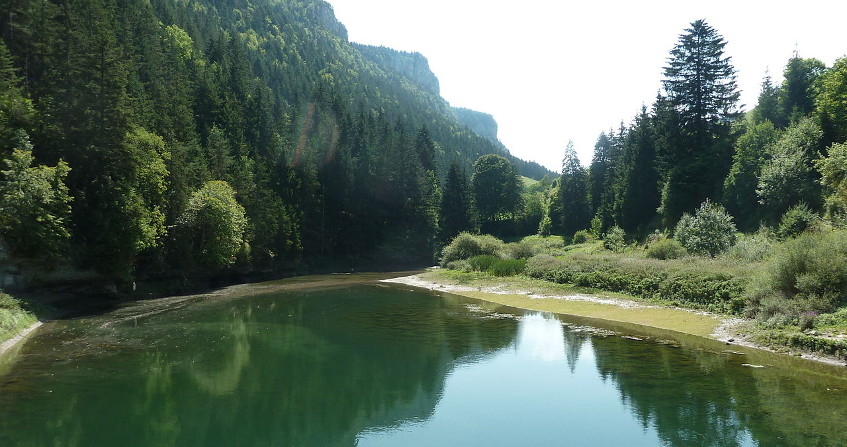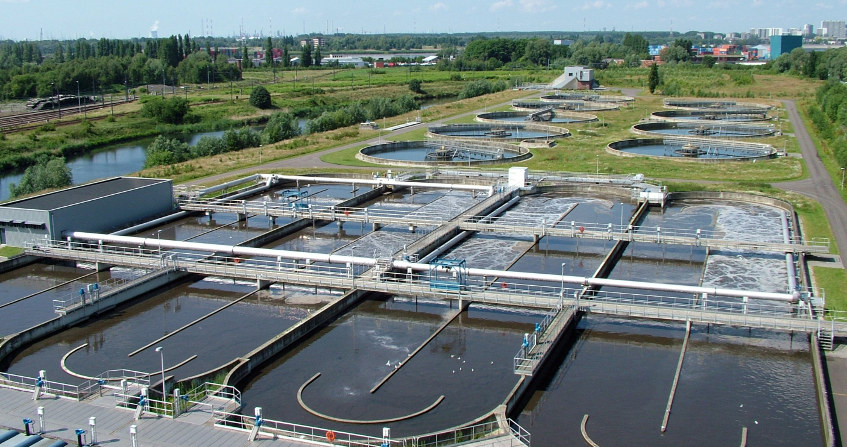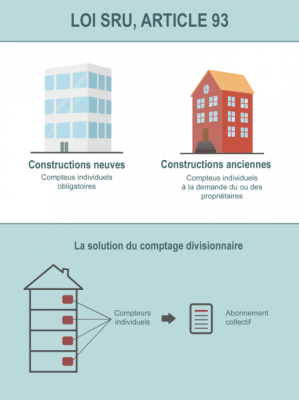Water meter, tariff, invoice: approximation better than accuracy?
PDF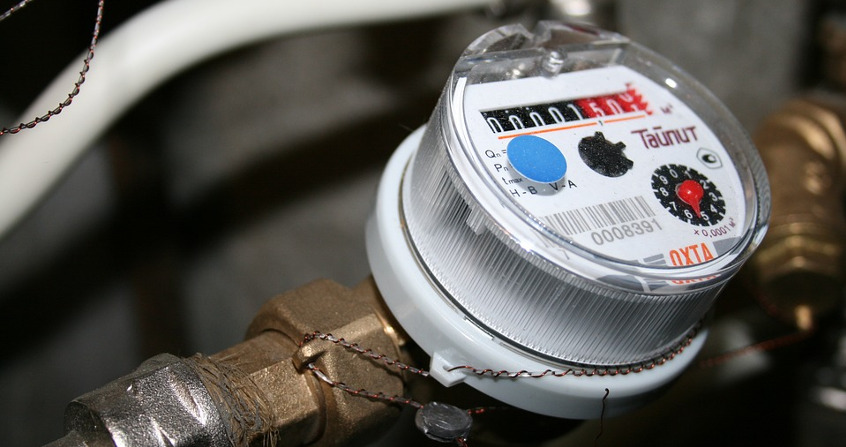
Should we count the volumes of water we consume, and in what level of detail? Together with watertight pressurized water systems and shut-off taps, the water meter is an important and discreet innovation in today’s Western city: it replaces the common good character of the resource with the club good character of a commercial service. The practice of metering is linked to its gradual adoption: there is no meter tradition in some countries, there is one per property in others and one per dwelling in others. In all cases, the redistributive effects of water tariffs are linked to the metering method adopted, and they record the transaction in the trust register. The recent decrease in water consumption in Western cities, a new and unexpected phenomenon, leads to a better understanding that it is difficult to reconcile the objectives of efficiency and justice in an ideal tariff. In French condominiums at least, water is not worth enough to get information on consumption practices per household, which would allow a more equitable distribution of public service costs, but at the cost of higher public service costs for all. Real-time monitoring of consumption using smart collective meters is sufficient to prevent the largest water leaks.
- 1. Water consumerisation
- 2. Water between two types of impure public goods
- 3. Genesis of water metering
- 4. Counting water: a matter of trust
- 5. On both sides of the counter : club and community
- 6. Social pricing, a new challenge for sustainability
- 7. Perverse effects of individualized invoicing
- 8. Messages to remember
1. Water consumerisation
During the 19th century, the cities’ relationship to water was transformed : if pipes had been serving buildings for a very long time, it was the installation of watertight pipe networks and taps that made home service possible. Then water meters could be installed, which gradually detached water from its character as a public good or common pool resource. Water has thus become a domestic or industrial consumer good. This transformation is almost complete in Europe and other developed countries, but not quite :
- there are still places where the population still uses private wells, rainwater tanks ;
- it is sometimes grouped around small common supply systems where water is still paid for on a flat-rate basis, according to rules that are supposed to be fair but not linked to the volume consumed ;
- in many cities in Europe and the Eastern United States, there is only one meter per building.
This is now a matter of debate: some people want each household to have its own meter, even in collective housing or at the bottom of hamlets. On the other hand, in many developing countries, the water meter is often rejected or even destroyed as a sign of unbearable “commodification”. So much passion around such an ordinary technical object! It was the debate over the sale of water to its consumers as a market good (commodification) that drew attention to the water meter. However, what is a meter if not the technical object allowing the transaction of the sale of drinking water? But the cost of managing the meter and invoicing raises another question: to what level of detail should we go?
2. Water between two types of impure public goods
Impure public goods are goods that lack one of the two characteristics that make them market goods : exclusive appropriation (ownership) and rivalry (competition). This typology refers to the pioneering work of Richard Musgrave and Paul Samuelson [1]: exclusive and potentially rivalrous goods are market goods (a bottle of mineral water). Conversely, those that have neither of the two characteristics are pure public goods, which must then be provided by the State and financed by taxes (a lighthouse).
Exclusive but non-competitive goods form a first category of impure public goods. These are toll or club goods, including commercial utilities (a water service charged to those connected).
The other category of impure public goods corresponds to common pool resources, studied by Vincent and Elinor Ostrom [2]; they correspond to situations where there is rivalry but little possible exclusion. Their shared exploitation is as old as the world. Institutional economics, law and public policy work has shown that sustainable management of these assets, especially at the local level, does not require the use of either the market or the State, but requires the establishment of a community management institution (Ostrom, 1990). Its operating principle is equity : a community brings together different people to act together on the basis of commonly agreed constraints, particularly with regard to burdens.

Club good is theoretically exclusive and free from rivalry. They appeared in the English and French bourgeoisies in the 18th century: individuals freely co-opted themselves to share the costs of activities, such as reading newspapers at a time when they were expensive. But first they had to be admitted, and pay a contribution, in principle equal. The first water networks in English cities were organized into private clubs. Our water utilities are also club goods, first because in the beginning, home water was considered a comfort, even a luxury, and we didn’t have to subscribe.
On the other hand, the law in 1894 forced Parisian buildings to be connected to the sewer system in the name of public health; and under these conditions, sanitation was paid for through local taxes. Even today, in France, we are free to buy drinking water or not, but in principle there is enough pressure for all subscribers to take water when they want, so there is no rivalry. It is possible to be excluded either for non-payment of the invoice (which has become rare or even prohibited for reasons of public health), or for technical impossibility of connection.

Why open the water service to everyone? This is of course for public health reasons, and it justifies reducing the rigour of “cost recovery”. This is the economic justification for social pricing : the under-consumption resulting from free choice must be circumvented by granting aid.
This is also why in the global South, States are tempted to make water services a pure public good (neither exclusion nor rivalry), to guarantee access to them while financing them with public money. But very often, the lack of public resources associated with the strong social fragmentation in the cities of these countries leads to an inequality of access that has become unbearable in the new objectives of sustainable development [4].
3. Genesis of water metering
There is no general history of water meters, let alone taps. We are not going to do it here, but we propose explanations for the fact that there are no meters in some developed countries, meters at the foot of buildings in others, and meters per dwelling elsewhere.
First of all, it is likely that the water service owes something to the gas industry, which needed to seal its networks for good safety reasons! Gas meters may have preceded water meters by about twenty years (1830 versus 1850). And indeed, in several countries, water and gas engineering associations have long remained joint. At that time, water networks were already expanding in England, and costs were generally covered by fixed prices or even local taxes linked to the rental value of the properties served. It is questionable whether it is not because the service had developed sufficiently before the invention of the meters that they were not installed afterwards, although the networks inside the houses were then all equipped with taps that close.

On the other hand, like most Europeans on the continent, the French all pay for water via a meter and bills. Those who had a subscription before the introduction of meters (i.e. one building in five in Paris in 1854), paid a fixed price : “The subscription to the free tap (or fixed price),[…] allows the consumer to receive an unlimited quantity of water at will against a fixed price, fixed by the City according to a certain number of parameters (number of people and animals, area of land to be watered…). In the subscription to the gauge, thanks to a small diaphragm (or lens), a fixed quantity of water, corresponding to the amount of the subscription subscribed, arrives each day in a tank installed in the building. ” [5]
It is quite possible that the expression “avoir l’eau courante” (to have running water) comes from these first forms of subscription. But Paris engineers eventually found that gauge subscriptions necessarily resulted in wastage from tank overflows, and proposed the installation of volumetric meters starting in 1876 to encourage water conservation And in 1885, less than 30% of subscribers to the gauge or free tap remained; in 1894, this type of subscription was no longer offered, and in 1900, meters were used in more than 97% of Parisian subscriptions.
In 1934, the volumetric meter became mandatory, regardless of the source of the water : the Parisian supply from aqueducts and springs was now exceeded by the filtered and chlorinated water from the Seine and Marne rivers in Ivry or Joinville. Water treatment, the main contribution of sanitary engineering, is of a cost proportional to the volume; this has legitimized a billing linked to the latter, therefore via a meter. The challenge at the time was to improve trust in a continuous, egalitarian but consumer-based public service.
In law, services of an industrial and commercial nature, falling within the notion of service rendu, must be invoiced to their beneficiaries, not financed by taxation : water, gas, electricity, telephone, etc. Conversely, users pay taxes for public services of an administrative nature because they are mandatory : for example, wastewater treatment was covered by property taxes until the decree of October 1967, which made it possible to transfer the corresponding charges to water bills.
In addition, if, for security reasons, gas and electricity distributors manage the distribution networks to the homes of each household, i.e. to apartments in buildings, this is not the case for water : in apartment buildings, there is often only one meter where the building is connected to water supply, and the operator sends a single invoice to the manager, without taking care of the internal networks. This is a frequent situation in many European cities, where metering is collective, which is cheaper for everyone, but mutualizes public service between neighbours.
In Spanish and Portuguese cities, and to a lesser extent in Italy, water meters were installed at the same time as networks, i.e. later than in France, the Netherlands or Germany : meter technology was already in common use at the time, and so today each family, even in collective buildings, receives its own water bill. The latter includes sanitation and sometimes even garbage collection! This amounts to estimating that we produce as much household waste as we consume tap water, which is roughly true if we assume that consumption is primarily related to the number of people in an apartment. But it’s not legal in France.
In the United States, the situation is mixed: water metering is widespread, particularly in Western cities where housing is mostly single-family and where water consumption per person is three to five times higher than in Europe. But very large Eastern cities like New York and Chicago have only recently introduced meters, and are still in the process of equipping themselves. When they do, they choose collective building metering rather than individual metering.
But the United States is also the birthplace of smart meters, remote reading meters, which make it possible to monitor residents’ consumption in real time and to set sophisticated, seasonal and/or increasing block tariffs (IBT), as in Los Angeles. For example, Boston, which has generalized the use of smart collective meters per buildings, adopted a per capita IBT taking into account the number of inhabitants behind each meter… This implies that the inhabitants concerned agree to say how many they are, which is more difficult to imagine in France : surveys among public housing operators show a frequent refusal to cooperate on the part of tenants, and also between the said operators and water utilities!
In the end, a double movement occurred : on the one hand, the cost of the meter plus the associated invoicing gradually decreased, making this method of cost recovery attractive; and at the same time, the idea of paying for water as a comfort service and through an invoice gradually imposed itself in connection with an urban culture based on private property. Great Britain, the first country equipped with water networks, historically did not know meters, and its culture of “imposed” drinking water (in both senses of the word) was transmitted to the Anglo-Saxon world, including Canada and the eastern United States; this is reflected in the history of water services in Montreal in the 19th century, where residents were forced to pay taxes to finance the generalization of water supply services [6]. Large cities in continental Europe equipped one or two generations later adopted the collective meter, and cities equipped later, especially in Mediterranean countries, switched directly to individual metering.
4. Counting water: a matter of trust
An original work by Armand Hatchuel [7] placed the question of the meter in the register of trust / mistrust in market exchange : the water seller was tracking unaccounted for and unpaid volumes of water. But conversely, the buyer thought the meter was overcharging. The mutual mistrust came from the inaccuracy of meters, especially for measuring small flows. Hence State’s intervention, with a procedure and a laboratory to test the meters before they are put into service. Today, information technology and remote transmissions have reduced the relative cost of water metering and billing systems overall, while improving accuracy, but metering is not without its shortcomings : there are always faulty meters, poorly recorded connections, botched or impossible readings.

Bringing buyers and sellers closer together and creating a climate of trust between them involves a so-called transaction cost. The meter certified by approved laboratories allows it to be routinized, thus reducing costs, but not eliminating them: it is currently estimated at around thirty euros per year. This is not insignificant.
And precisely, on the basis of general studies of variations in consumption as a function of price or income, based on large samples, supporters of water tariffs incentivising conservation have recommended to generalize individual household metering [8]. But they did not take into account the annual cost of amortizing the meter, reading and invoicing the customer, and also litigation, in the comparison with other cost coverage methods. If there were only single family homes in France, there would be no problem, as each property has its own meter. But in apartment buildings, the additional cost of individual metering and invoicing, which distributors want to recover in the fixed part, usually exceeds the gain that the most economical could make by no longer paying for any excess consumption by their neighbours.
However, without a meter on each household, how can we encourage residents to save water? An intermediate solution consists in sub-meterings; apartment meters have spread when modern large condominiums distributed collective hot water the corresponding bill was allocated by volume; the practice of cold water sub-metering has followed, until it became mandatory in new buildings. While this sub-metering solution is much cheaper than sending an invoice to each household, it is also more work for the building manager. But another answer is provided by field work: operators must take care of water users! Boston Water an Sewer Commission in the United States refused to adopt iindividual apartment meterings, but remotely monitors buildings’ smart collective meters, and connects with residents as soon as the consumption profile becomes abnormal. It is cheaper and more efficient.
5. On both sides of the counter : club and community
If in a building there is only a collective meter, there is on the one hand a club relationship between public service and subscribers (freedom of contractors and equality of users), and on the other hand, a co-ownership or community of neighbours, within which the sharing of drinking water makes it once again a common good : the (collective) invoice must be shared between all those behind the meter, without knowing who consumed what; tenants (or co-owners) may be tempted to monitor each other, and possibly accuse each other of waste. The distribution of the collective invoice according to the surfaces of the apartments is a simple rule but not necessarily fair from the point of view of consumption, and which can therefore lead to disputes.
However, according to our own investigations [9] even with divisional meters, a “fairer” way of distributing the building’s bill, the disputes did not disappear; before the development of remote reading, there were still occupants who were not there when the meters in their apartments were read. And there are still some meters that don’t work. With remote reading, we discover that some residents refuse to be “monitored” in their private lives through real-time metering.
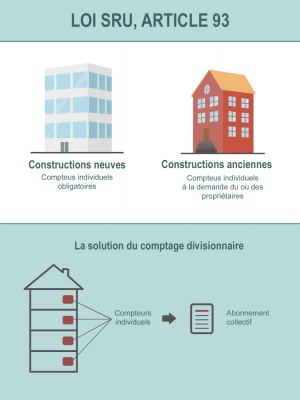
But who wins, who loses? In the distribution by apartment area, it is often the large and less wealthy families that are favoured over the rich and lonely: the latter occupy more space per person than the large families, which are in fact “helped” by their neighbours. When each family pays according to its consumption, this solidarity no longer plays a role and typically, it is the single people living in large apartments who benefit. But since the fixed cost of the individual subscription must be added, all subscribers lose out, except in exceptional cases. In large buildings, the divisional meters mentioned above can be used.
It is often the defenders of “consumerist” justice (everyone must pay for their water consumption and that’s all) who want individualized, even more progressive pricing. We can then consider that they want to push the logic of public service club good to the extreme, by wanting to be direct members of the club instead of their co-ownership; and so they behave as in the founding fiction of the market economy : everyone would only follow their individual interest and seek to maximize their benefits! But this attitude is precisely not the most widespread, and when they are in confidence with their neighbours, the inhabitants of the buildings understand that it is not in their interest to pay more so that they do not have to pay for others! This is why many distributors prefer to invest in collective remote reading meters to establish new relationships with users or residents. In addition, water distributors like collective metering because it drastically reduces the risk of unpaid bills… which have increased significantly since the ban on cuts in the name of the “right to water”.
The maintenance of community building structures, articulated to the public service by a single meter, is judicious, because it is advantageous for all members, provided they have sufficient confidence in each other. But this refers to the responsibility of condominiums and social landlords to take care of the consumption of the building : instead of getting rid of the sometimes painful distribution of water bills on the backs of water distributors, some enter into contracts with specialized companies to help individuals identify and reduce their leaks [10], which is the main cause of high bills and leads to the desire for individualization !
6. Social pricing, a new challenge for sustainability
In fact, these redistributive issues have become more acute since the implementation of European directives has considerably increased the price of water : in France the average price per m3 doubled between 1990 and 2004 [11] (compared to an average price inflation of 28% over the period). Since the aim is to eliminate subsidies and bring the price closer to the “full cost”, it is “quite naturally” proposed to residents to reduce their waste in order to pay less and better protect the resource. Yes, but if they do (in Paris consumption has dropped by 30% in 20 years), the public service receives less money from bills. Since its costs are essentially fixed costs related to the management of heavy infrastructure, and in a context where the law requires it to balance its accounts, in the short term it must increase the price of water! How then can we explain to users that if they save water, they will pay more for it? Especially in a context where the media coverage of the non-transparency of delegation contracts has triggered a crisis of confidence!
The worst thing is that while the wealthiest can invest in water saving devices, the poorest often cannot or often do so and are therefore the losers. And we are witnessing a new phenomenon : water payment difficulties are increasing in rich countries at a time when the global demand for the right to water is pushing public services to seek forms of social pricing.
This social dimension of water service management brings them into the issue of sustainable water management, because it introduces a dimension of social equity, alongside environmental – health and economic (cost recovery) objectives. But these three objectives are not necessarily compatible, and it is doubtful whether a tariff system based on the individual meter can “magically” satisfy the sustainability criteria along all three axes. Thus, while the deputies voted for individualisation for social reasons among others, its application in social buildings is proving catastrophic in terms of unpaid bills (testimonies from the Niort and Amiens authorities). Indeed, the payment of water monthly in the charges is predictable, and therefore easier to bear by modest families than the sending of an invoice every six months that arrives unexpectedly and is higher.
The OECD [12] supported increasing bracket pricing, believing that the brackets could be sized to avoid regressive effects. However, the work of economists shows that this pricing is inadequate in poor countries and that it is better to grant identified beneficiaries a discount on a uniform rate [13]. In Europe, various studies have produced such critical analyses [14], going against the enthusiasm of civil society and political authorities. The supposed virtues of progressive pricing come up against the reality of a slight drop in consumption compared to the increase in price : within housing, the elasticity of consumption is low. The decrease is mainly due to the replacement of taps, flushes and household appliances; however, users do not change their appliances as soon as the price of water increases. Causality could even be the other way around, because, faced with falling revenues, operators are forced to increase the tariff to balance costs largely set by the infrastructure, according to the law that applies to services.
Moreover, redistribution between high-income and low-income households can only be observed if the latter consume less water than the former. This is what is naively believed by assimilating tap water into a commodity. But some more precarious (but large) families may consume more water than wealthier households, with the counterproductive effect of progressive pricing.
In addition, public and private operators fear progressive tariffs : they do not want to see some large industrial users or users of public services contributing to revenue stability leave, and who would not necessarily save overall water by sourcing directly from the resource. Nor do they want a sudden rate increase to lead to a loss of user confidence and even an increase in unpaid bills. Consequently, where some organising authorities seek to do social work with incentive tariffs, others prefer to separate the two issues, and set up forms of assistance outside the tariff (water vouchers for example). But in any case, it remains difficult to identify potential beneficiaries : the traditional customer relationship does not allow the causes of unpaid debts to be understood (can’t pay or won’t pay), and the households concerned by subsidies are much less visible than they should be. Finally, it is expensive to meet them.
7. Perverse effects of individualized invoicing
In fact, there is a significant lack of sociological and economic studies on the determination of water consumption, user reactions to tariff incentives, and especially on the redistributive effects of current and planned tariff systems. This applies to most public services that, from electricity or gas to public transport or school canteens, charge different forms of social charges, each in its own way, without checking their effects. A comparative analysis would be useful.
The historical decline in individual water consumption and the low level achieved in some European countries suggest a more complex reality than the idea of introducing tariff incentives to economies. Indeed, the individual apartment meter and the individual invoicing result in a significant increase in the fixed part of the invoices, which ultimately goes against the principle of elasticity which bases the incentive pricing ! [15]
The point is that water is not worth enough to warrant metering, and even a very refined tariff : the water meter is a useful source of information for the utility, but it has a cost. And if detailed information costs more than the benefit that can be expected, it should not be sought. While in the western United States, individual consumption is high enough and housing is pavilion-based enough to warrant one meter per dwelling, this is not the case in Europe : the collective meter is sufficient in most small buildings, and it is only in large complexes, because of confidence/trust, that we are right to install divisional meters.
However, it is not the least paradoxical to see some advocates of the re-municipalization of water services, proclaimed in the name of the fact that water would be a common good in general, simultaneously encouraging the individualization of bills in the name of ecology, which obviously increases the commodification of the service! And if water is to be a common good, we must first eliminate the very principle of metering, and return to community-based, equitable and constrained management and financing methods. But what majority would be found in France for financing water and sanitation services through local taxes?
What must be understood is that in the public water service, subscribers and the operator are linked together by the financial weight of the infrastructure : if some pay less, others will have to pay more, or the operator will have to renounce budget balance, or delay renewal investments. Moreover, the individualism that awakens in the face of rising water prices may lead some people to seek alternative resources and “disconnect [16]” : this could lead to a reduction in water consumption in the network to such an extent that it would no longer be possible to finance the maintenance of the infrastructure.
A degraded public service, with autonomous mechanisms for those who can invest, is this not the situation of cities in the global South? What would be waiting for our public services would then be the social fragmentation that exists in these cities, where the population still has a community relationship with water as a resource, neighbourhood by neighbourhood, in the absence of a local public authority capable of building trust in the public service. Or else we need to rethink public services, by providing service according to location, either by networks or by autonomous techniques, i.e. with complex and interlocking management scales and forms of responsibility : we are thinking about it in Germany, we should think more about it in France.
In short, it seems that a detailed knowledge of water services as a private club good should lead to greater caution regarding the virtues of so-called incentive and social pricing. But also and conversely, to be more cautious in defending water as a common good [17] : when various militant movements mobilize this expression, it is often to express the idea of an incompatibility of water, essential to life, with its “commodification”; but the latter is more fundamentally linked to the meter itself than to the private company that manages it. [18]
8. Messages to remember
- Water meters, which appeared after the installation of pressurized water networks and taps, made it possible to charge subscribers for the volumes of water used, thus transforming the nature of the good that water constitutes : from a common or public good to a club good subject to public service rules.
- Drinking water is not a commodity like any other, because public service subscribers are linked to each other and to the operator through the infrastructure of networks and factories, although they are free to go away… by letting others pay more!
- Water metering is gradually becoming more widespread throughout the world, and the recent introduction of remote metering has made it possible to establish new relationships of trust between operators and users. But putting in a water meter and sending an invoice to each household can cost more than collectively managing the water in a building with leak monitoring.
- Water pricing must perform several functions at the same time : recovery of the costs of a service, which are essentially fixed costs; efficiency of water use to avoid waste; and now access to water for all, including the poorest.
- The decline in water consumption in Western cities since the end of the 20th century shows that these three objectives are not easy to achieve together, or at the cost of high information costs.
- When an organizing authority is considering changing a water tariff, it should first conduct a study of the distributional effects of the change, taking into account the complexity of these effects
- Water meters illustrate the aphorism of sociologist Evan Vlachos : “it is better to be approximately right than precisely wrong“
Notes and references
Cover image. [Source : Royalty-free image]
[1] Taken for example by Desmarais-Tremblay M., 2014.05, On the Definition of Public Goods. Assessing Richard A. Musgrave’s contribution. Working documents of the Centre d’Economie de la Sorbonne. ISSN : 1955-611X. 2014. <halshs-00951577>>
[2] Ostrom (1990) Governing the Commons : The Evolution of Institutions for Collective Action, Cambridge University Press.
[3] “Finally, the last principle of public service operation is the so-called adaptability or mutability principle. Presented as a corollary of the principle of continuity, it is a question of providing a service as well as possible, speaking qualitatively, rather than its continuity over time. This means that public service must not remain static in the face of changes in society; it must keep pace with users’ needs (e.g. flexibility in the organisation of public services) and technological developments (e.g. the transition from gas to electricity at the beginning of the 20th century)”. Cf. Directorate of Legal and Administrative Information, Public Life – Discovery of institutions – in-depth study. (http://www.vie-publique.fr/decouverte-institutions/institutions/approfondissements/notion-service-public.html)
[4] Jaglin S. 2005, Water Services in Sub-Saharan Africa. The urban fragmentation in question, CNRS editions : Paris, 244 p.
[5] Chatzis K., 2006, Brève histoire du compteur d’eau à Paris, 1880-1930, Terrains et travaux, n° 11, p. 159-178.
[6] Fougères, D., 2004, L’approvisionnement en eau à Montréal : du privé au public, 1796-1865, Éd. Septentrion, 472 p.
[7] Hatchuel, A., 2000, Les métamorphoses dans l’échange marchand : petite histoire des méteurs d’eau’, in Laufer, R., Orillard, M., La confiance en question, L’Harmattan, p. 351-362.
[8] For example : Herrington, P. 2007. Waste not, want not, sustainable water tariffs, report for WWF-UK.
[9] For example, interview with Olivier Jacque, head of the water and sanitation department in Paris in 2006
[10] These companies often use acoustic techniques (listening to pipes at night).
[11] The general structure of water tariffs is presented in Montginoul M., Loubier, S. Barraqué B., Agenais M.L., 2015, Water Pricing in France: Towards More Incentives to Conserve Water, in Dinar A., Pochat V., Albiac-Murillo J. (eds), Water Pricing Experiences and Innovations, Global Issues in Water Policy n°9, Springer, ch.8, pp 139-160.
[12] OECD/OECD (Organisation for Economic Co-operation and Development), 2003, Social issues in the provision and pricing of water services. Paris: OECD publishing.
[13] Boland, J. and Whittington, D. 2000, The political economy of water tariff design in developing countries: Increasing block tariffs vs. uniform price with rebate. In Dinar A. (Ed), The political economy of water pricing reforms, pp. 215-235. Washington, DC: The World Bank. New York: Oxford University Press.
[14] Prevedello C. Barraqué B. 2016, Les tarifications progressives et sociales de l’eau, in ASTEE (dir.), Des Territoires à l’Europe, construire ensemble les transitions environnementales, ouvrage introductif au 96e congrès de Liège, pp 214-217
[15] B. Barraqué (2016) Redistributive effects of progressive pricing: the case of a medium-sized city, in TSM, n°5, May 2016, pp 72-82
[16] Montginoul M., Rinaudo J.-D., 2003, Impact of pricing on household water consumption and supply strategies. In La Houille Blanche, vol. 3, p. 107-111.
[17] Barber R., B. Barraqué and C. Tindon, 2018, Could drinking water become a common good? Espace de coexistence et imaginaire social du commun, in Développement Durable et Territoires, 2019, vol.10 n°1.
[18] B. Barraqué, 2018 Common good water, public service water: North-South discussion, in 4D (ed) Encyclopedia of sustainable development, n°245, January
The Encyclopedia of the Environment by the Association des Encyclopédies de l'Environnement et de l'Énergie (www.a3e.fr), contractually linked to the University of Grenoble Alpes and Grenoble INP, and sponsored by the French Academy of Sciences.
To cite this article: BARRAQUE Bernard (April 3, 2019), Water meter, tariff, invoice: approximation better than accuracy?, Encyclopedia of the Environment, Accessed July 27, 2024 [online ISSN 2555-0950] url : https://www.encyclopedie-environnement.org/en/society/water-meter-tariff-invoice/.
The articles in the Encyclopedia of the Environment are made available under the terms of the Creative Commons BY-NC-SA license, which authorizes reproduction subject to: citing the source, not making commercial use of them, sharing identical initial conditions, reproducing at each reuse or distribution the mention of this Creative Commons BY-NC-SA license.





